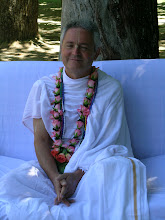
Krishna in the Bhagavad-Gita, one of the most well-known and loved scripts shared among different Schools of Thought in the Indian Continent, says that Knowledge means to distinguish the field (body) from the knower of the field (Self). To detach oneself from the body does not mean to refuse or despise it, in this wise there would not be real detachment since, as Heraclitus said, what attracts will disgust and vice versa.
In order to overcome the opposites of attraction and disgust, in Sanskrit called raga and dvesha, it is necessary to balance the opposites, to find the conjunction and to harmonize them. In this research of balance and harmonization, yoga, points out the importance of mediation. The term yoga derives from the Sanskrit root yuj, literally meaning “to unify, to connect”. As a matter of fact, yoga is the science for the Reintegration of the individual self with the Supreme Self, of infinitesimal consciousness with the Cosmic Consciousness. In the Bhagavad-Gita are described different types of yoga and Patanjali, in his famous treatise on Yogasutra that is one of the first and most relevant Schools of Mankind Psychology, describes eight phases to develop the Yogic Discipline (ashtanga yoga) where meditation is placed just as penultimate phase. Before entering a meditative state, the aspirant yogi has to purify his mind and heart by abstaining from activities that are against the spiritual evolution, yama, and engaging himself in favorable ones , niyama. Then, one has to become an expert in postures, asana, that enable to perceive the body as little as possible and afterward to learn the art of breathing, pranayama. By turning inside himself and detaching sense-organs from objects, pratyahara, trying to concentrate on his attentional resources towards an unique direction, dharana, the yogi predisposes himself to the very meditation, dyhana, where the flow of attention is not anymore called away by exterior interferences and thanks to which he will reach a stage of complete interior absorption, defined samadhi. The Pre-samadhi stages are necessary to resolve conflicts between the different psychic structures and functions, through the harmonization of personality and before aspiring to the complete absorption of the meditative seed, bija, all the more so the Self. The approach to meditation must be gradual, since first it is necessary to develop a certain knowledge arising from awareness of small realnesses, without the presumption from time to time to have conquered Reality and Truth thinking to be definitely illuminated. What happens by meditating is a continuous and progressive realization of Reality, that reveals itself slowly until it is clear, evident, bright and natural, so natural that it would be impossible to conceive it differently.
For example, the awareness of being different than the body can arise suddenly, as in the case of diagnosis of terminal illness, of irreversible and degenerative pathology, boosting the patient not to concentrate just on the physical structure that is subject to such a devastation, but on himself. From this perspective, as explained through different MCE works for several Italian Hospitals and Health Care Institutions, death must not be seen as a physical event, something concrete, but more as an abstract concept, since there is not concrete end of something, but the transformation in something else. On the other hand, the aim of disidentification may be progressively reached through an introspective process that enables to understand that the body is our external means, we must not identify ourselves in it, but consider it precious, useful and dear to us serving to future experiences and acquaintances. The human body and personality do not represent exhaustly the entirety of the person, but are simple aspects. The eminent divine part of us considers these aspects, as in general the human dimension, like reduction and constraint, a sort of prison.
Nevertheless, in Plato’s Metaphor the soul cage must not be considered obsessively as an oppression, since it is evolved material structure equal to the elevation degree of the consciousness housed in it. Therefore, everyone inhabits a certain body and consequently takes with it determined pathologies or a healthy state.














